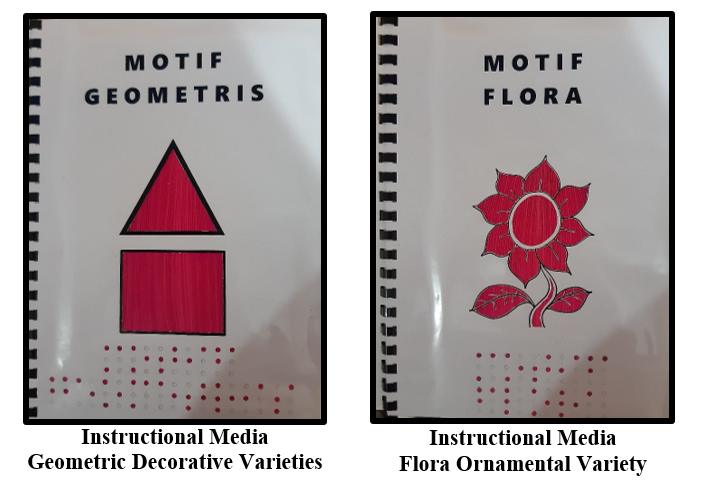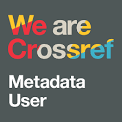Development of Cultural Arts Learning Media from Corn Husk Waste Materials for Students with Special Needs
DOI:
https://doi.org/10.51574/ijrer.v4i3.3329Keywords:
Corn Husk, Art and Culture, Extraordinary School, Instructional MediaAbstract
Extraordinary School is a formal educational institution that provides education specifically for children with special needs. One of the subjects taught at Public Extraordinary School Gorontalo is art and culture. There are difficulties experienced by teachers in the art and culture subject for students at Extraordinary School because so far there has been no special media used to teach the art and culture subject, where subject teachers must present material with different student disabilities. This study intends to determine the potential of corn husk fiber as a learning medium for children with special needs at Public Extraordinary School Gorontalo. The method used in this study is the creation method. The creation process consists of several stages, namely stage exploration, stage improvisation, and stage formation. The results of this basic research indicate that there are new findings in the form of a formulation of the concept of a trial of making and using corn husks as one of the raw materials that are the basic materials for making learning media in the form of teaching aids equipped with Braille letters and can be used as an aid in the teaching and learning process in the art and culture subject, visual arts material, and the main topic of decorative variety for blind students at Public Extraordinary School Gorontalo.
References
Alkasasbeh, A. A., & Ghinea, G. (2020). Using olfactory media cues in e-learning–perspectives from an empirical investigation. Multimedia Tools and Applications, 79, 19265-19287. https://doi.org/10.1007/s11042-020-08763-3
Alwi, S. H., Hasdiana, H., & Mohamad, I. (2024). Pengembangan Media Pembelajaran Berbasis Scrapbook Pada Materi Seni Kaligrafi Bagi Siswa Kelas XI SMA Negeri 1 Gorontalo. Innovative: Journal Of Social Science Research, 4(6), 9102-9116. https://doi.org/10.31004/innovative.v4i6.17178
Anderson, A., & Valero, L. (2020). Supporting academic vocabulary and social-emotional skills of students with learning disabilities through an arts-integrated social studies approach. Teaching Exceptional Children, 53(2), 150-162. https://doi.org/10.1177/0040059920942266
Artiola, J. F. (2019). Industrial waste and municipal solid waste treatment and disposal. In Environmental and pollution science (pp. 377-391). Academic Press. https://doi.org/10.1016/B978-0-12-814719-1.00021-5
Billingsley, G. M., Thomas, C. N., & Webber, J. A. (2018). Effects of student choice of instructional method on the learning outcomes of students with comorbid learning and emotional/behavioral disabilities. Learning Disability Quarterly, 41(4), 213-226. https://doi.org/10.1177/0731948718768512
Bringman‐Rodenbarger, L., & Hortsch, M. (2020). How students choose E‐learning resources: The importance of ease, familiarity, and convenience. Faseb Bioadvances, 2(5), 286-295. https://doi.org/10.1096/fba.2019-00094
Budiarti, A., Muckromin, A., Budiwati, R., & Minsih, M. (2023). Management of children special needs with emotional and behavioral disorders through education services. At-Tajdid: Jurnal Ilmu Tarbiyah, 12(1), 12-19. https://ejournal.isimupacitan.ac.id/index.php/tajdid/article/view/308
Dell’Anna, S., Pellegrini, M., & Ianes, D. (2019). Experiences and learning outcomes of students without special educational needs in inclusive settings: a systematic review. International Journal of Inclusive Education, 25(8), 944–959. https://doi.org/10.1080/13603116.2019.1592248
Di Fuccio, R., Ponticorvo, M., Nadim, M. A., & Limone, P. (2024). Exploring the effect of digital and multisensory educational materials on retention in primary school using Tangible User Interfaces. Interactive Learning Environments, 33(4), 2928–2938. https://doi.org/10.1080/10494820.2024.2427277
Duran, D. (2016). Learning-by-teaching. Evidence and implications as a pedagogical mechanism. Innovations in Education and Teaching International, 54(5), 476–484. https://doi.org/10.1080/14703297.2016.1156011
Ediyani, M., Hayati, U., Salwa, S., Samsul, S., Nursiah, N., & Fauzi, M. B. (2020). Study on development of learning media. Budapest International Research and Critics Institute (BIRCI-Journal): Humanities and Social Sciences, 3(2), 1336-1342.
Gierczyk, M., & Hornby, G. (2021). Twice-exceptional students: Review of implications for special and inclusive education. Education Sciences, 11(2), 85. https://doi.org/10.3390/educsci11020085
Hasdiana, H., & Ayuddin, A. (2017). Quality improvement of corn husk as raw material for textile products. In 1st International Conference on Social, Applied Science and Technology in Home Economics (ICONHOMECS 2017) (pp. 141-145). Atlantis Press. https://doi.org/10.2991/iconhomecs-17.2018.34
Hawkins, H. (2015). Creative geographic methods: knowing, representing, intervening. On composing place and page. cultural geographies, 22(2), 247-268. https://doi.org/10.1177/1474474015569995
Lemons, C. J., Vaughn, S., Wexler, J., Kearns, D. M., & Sinclair, A. C. (2018). Envisioning an improved continuum of special education services for students with learning disabilities: Considering intervention intensity. Learning Disabilities Research & Practice, 33(3), 131-143. https://doi.org/10.1111/ldrp.12173
Lenvik, A., Jones, L. Ø., & Hesjedal, E. (2022). Teachers’ perspective on gifted students with extraordinary learning potential in Norway: A descriptive study with primary and secondary teachers. Gifted and Talented International, 37(2), 163–172. https://doi.org/10.1080/15332276.2022.2138796
Moto, M. M. (2019). Pengaruh penggunaan media pembelajaran dalam dunia pendidikan. Indonesian journal of primary education, 3(1), 20-28. https://doi.org/10.17509/ijpe.v3i1.16060
Nurwidyayanti, N. (2022). Karakteristik dan permasalahan untuk anak berkebutuhan khusus. Klasikal: journal of education, language teaching and science, 4(3), 662-669. https://doi.org/10.52208/klasikal.v4i3.460
Rene, E. R., Sethurajan, M., Ponnusamy, V. K., Kumar, G., Dung, T. N. B., Brindhadevi, K., & Pugazhendhi, A. (2021). Electronic waste generation, recycling and resource recovery: Technological perspectives and trends. Journal of hazardous materials, 416, 125664. https://doi.org/10.1016/j.jhazmat.2021.125664
Siahaan, M. K. (2022). Education for children with special needs. The Explora, 8(2), 14-27. https://doi.org/10.51622/explora.v8i2.642
Simorangkir, M. R. R., & Lumbantoruan, J. H. (2021). Aksesibilitas Anak Berkebutuhan Khusus di Era Pendidikan 4.0. Jurnal Dinamika Pendidikan, 14(1), 204-213. https://doi.org/10.51212/jdp.v14i1.2901
Sudarsana, I. K., Arini, N. W., Mastini, G. N., Sukerni, N. M., & Pusparini, L. D. (2020). Learning media: The development and its utilization. Yayasan Ahmar Cendekia Indonesia.
Widana, I. W., Sumandya, I. W., & Citrawan, I. W. (2023). The special education teachers’ ability to develop an integrated learning evaluation of Pancasila student profiles based on local wisdom for special needs students in Indonesia. Kasetsart Journal of Social Sciences, 44(2), 527-536. https://so04.tci-thaijo.org/index.php/kjss/article/view/266283
Zigmond, N. P., & Kloo, A. (2017). General and special education are (and should be) different. In Handbook of special education (pp. 249-261). Routledge. https://doi.org/10.4324/9781315517698-21

Downloads
Published
How to Cite
Issue
Section
License
Copyright (c) 2025 Hasdiana Hasdiana, Suleman Dangkua

This work is licensed under a Creative Commons Attribution-ShareAlike 4.0 International License.









1.png)













